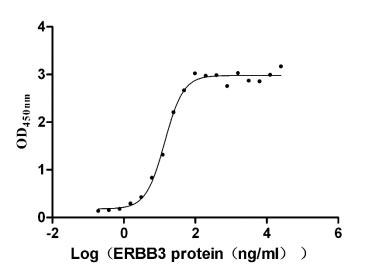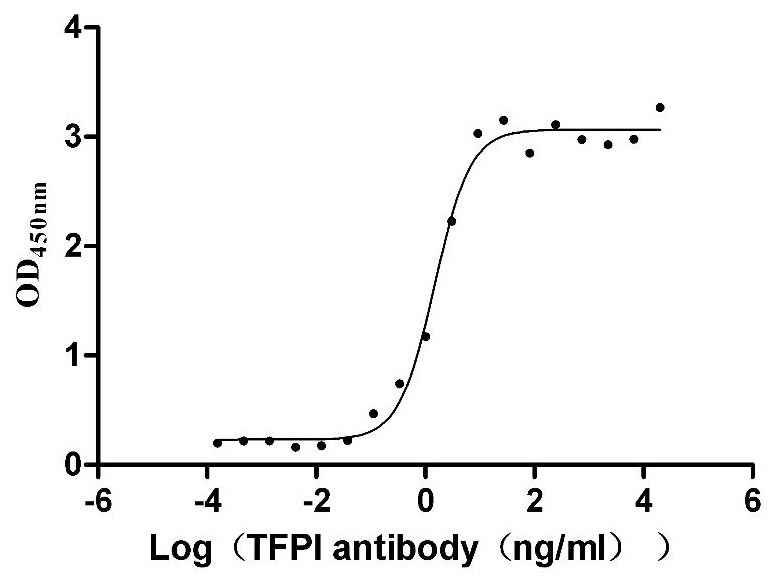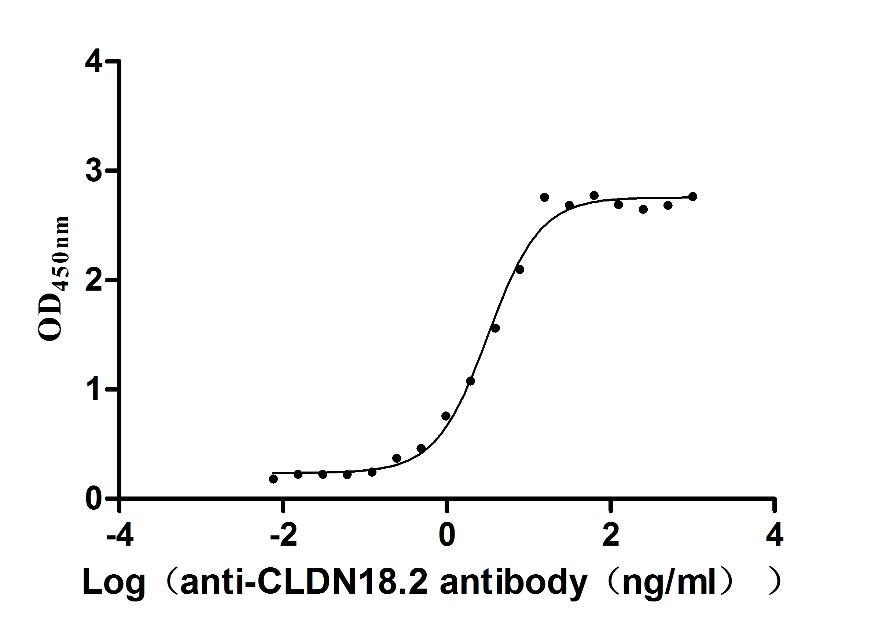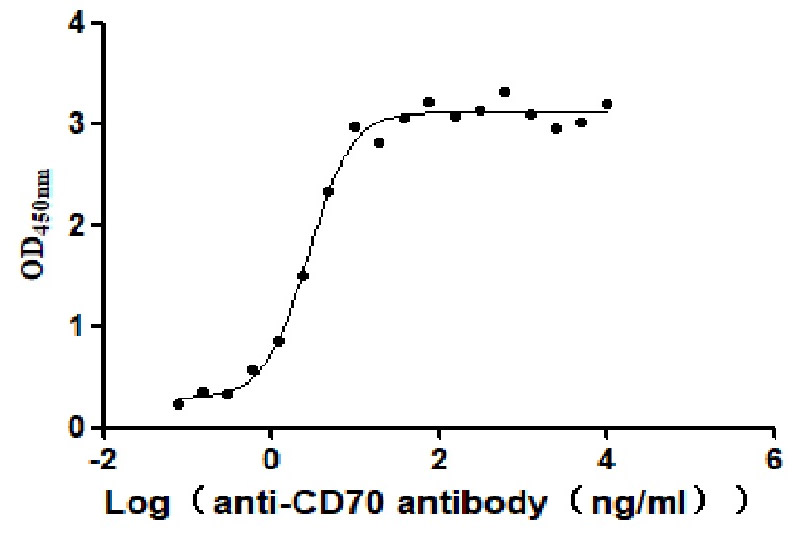Recombinant Rat SH3 and multiple ankyrin repeat domains protein 3 (Shank3), partial
-
中文名称:大鼠Shank3重组蛋白
-
货号:CSB-YP872887RA
-
规格:
-
来源:Yeast
-
其他:
-
中文名称:大鼠Shank3重组蛋白
-
货号:CSB-EP872887RA
-
规格:
-
来源:E.coli
-
其他:
-
中文名称:大鼠Shank3重组蛋白
-
货号:CSB-EP872887RA-B
-
规格:
-
来源:E.coli
-
共轭:Avi-tag Biotinylated
E. coli biotin ligase (BirA) is highly specific in covalently attaching biotin to the 15 amino acid AviTag peptide. This recombinant protein was biotinylated in vivo by AviTag-BirA technology, which method is BriA catalyzes amide linkage between the biotin and the specific lysine of the AviTag.
-
其他:
-
中文名称:大鼠Shank3重组蛋白
-
货号:CSB-BP872887RA
-
规格:
-
来源:Baculovirus
-
其他:
-
中文名称:大鼠Shank3重组蛋白
-
货号:CSB-MP872887RA
-
规格:
-
来源:Mammalian cell
-
其他:
产品详情
-
纯度:>85% (SDS-PAGE)
-
基因名:
-
Uniprot No.:
-
别名:Shank3; Prosap2; SH3 and multiple ankyrin repeat domains protein 3; Shank3; Proline-rich synapse-associated protein 2; ProSAP2; SPANK-2
-
种属:Rattus norvegicus (Rat)
-
蛋白长度:Partial
-
蛋白标签:Tag type will be determined during the manufacturing process.
The tag type will be determined during production process. If you have specified tag type, please tell us and we will develop the specified tag preferentially. -
产品提供形式:Lyophilized powder
Note: We will preferentially ship the format that we have in stock, however, if you have any special requirement for the format, please remark your requirement when placing the order, we will prepare according to your demand. -
复溶:We recommend that this vial be briefly centrifuged prior to opening to bring the contents to the bottom. Please reconstitute protein in deionized sterile water to a concentration of 0.1-1.0 mg/mL.We recommend to add 5-50% of glycerol (final concentration) and aliquot for long-term storage at -20℃/-80℃. Our default final concentration of glycerol is 50%. Customers could use it as reference.
-
储存条件:Store at -20°C/-80°C upon receipt, aliquoting is necessary for mutiple use. Avoid repeated freeze-thaw cycles.
-
保质期:The shelf life is related to many factors, storage state, buffer ingredients, storage temperature and the stability of the protein itself.
Generally, the shelf life of liquid form is 6 months at -20°C/-80°C. The shelf life of lyophilized form is 12 months at -20°C/-80°C. -
货期:Delivery time may differ from different purchasing way or location, please kindly consult your local distributors for specific delivery time.Note: All of our proteins are default shipped with normal blue ice packs, if you request to ship with dry ice, please communicate with us in advance and extra fees will be charged.
-
注意事项:Repeated freezing and thawing is not recommended. Store working aliquots at 4°C for up to one week.
-
Datasheet :Please contact us to get it.
靶点详情
-
功能:Major scaffold postsynaptic density protein which interacts with multiple proteins and complexes to orchestrate the dendritic spine and synapse formation, maturation and maintenance. Interconnects receptors of the postsynaptic membrane including NMDA-type and metabotropic glutamate receptors via complexes with GKAP/PSD-95 and HOMER, respectively, and the actin-based cytoskeleton. Plays a role in the structural and functional organization of the dendritic spine and synaptic junction through the interaction with Arp2/3 and WAVE1 complex as well as...显示更多
-
基因功能参考文献:
- Loss of scaffold proteins via knockdown of Shank1 or Shank2, but not Shank3, led to a reduction of the number but not the unitary response of AMPAR-containing synapses. Only when both Shank1 and Shank2 were knocked down, were both the number and the unitary response of active synapses reduced. This reduction was accompanied by a decrease in NMDAR-mediated synaptic response. PMID: 29250591
- SHANK3 expression was increased in the neocortex of temporal lobe epilepsy patients and rats. PMID: 27592227
- The SH3 domain from Shank3 was studied at sub-atomic resolution. The Shank family has lost the canonical peptide-binding site of the SH3 domain. The Shank SH3 domain may have lost or altered canonical SH3 domain functions. PMID: 28647360
- The data of this study support the concept that Shank3 is a crucial regulator of zinc-dependent signaling at excitatory synapses. PMID: 27581454
- NMDA-induced accumulation of Shank3 at the PSD was transient. PMID: 27144302
- SHANK1 and SHANK3 act as integrin activation inhibitors by sequestering active Rap1 and R-Ras via the SPN domain and thus limiting their bioavailability at the plasma membrane. PMID: 28263956
- In primary hippocampal cultures, Shank3 was always expressed. In stage 2 neurons, it was in soma, neuritis, and growth cones. In stage 3, it was also in the tau-positive neurites. shRNA-mediated Shank 3 knockdown upregulates GluN1 in axon terminals. PMID: 26725465
- Article reports a newly identified protein-protein interaction between the postsynaptic density-protein ProSAP2/Shank3 and the voltage-gated potassium channel subunit Kvbeta2 PMID: 24211303
- Shank3 protein has a role in regulating metabotropic glutamate receptor 5 (mGluR5) expression and signaling at synapses PMID: 21795692
- PLCbeta1b associates with a Shank3 complex at the cardiac sarcolemma via its splice-variant-specific C-terminal tail PMID: 21148417
- Concerted action of ProSAP/Shank and Zn(2+) is essential for the structural integrity of the postsynaptic density and an important element in synapse formation, maturation and structural plasticity. PMID: 21217644
- Scaffolding proteins ProSAP1/2 were found within the postsynaptic specializations of synapses within the PNS, indicating a similar molecular assembly of central and peripheral postsynapses. PMID: 20800661
- results suggest that Shank recruits beta PIX and p21-associated kinase to spines for the regulation of postsynaptic structure PMID: 12626503
- The proline-rich region present in C termini of CaV1.3a subunit binds to Shank Src homology 3 domain. PMID: 15689539
- findings show that the sterile alpha motif domain of rat Shank3/ProSAP2, a master scaffolding protein located deep within the postsynaptic density, can form large sheets composed of helical fibers stacked side by side PMID: 16439662
- A novel binding partner for the PDZ domain of SPAR and Shank3 proteins, ProSAPiP1, is reported and characterized. PMID: 16522626
- Data show that Prosap2 is present in the olfactory cilia. PMID: 18596612
- a novel interaction partner of ProSAP2/Shank3, named ProSAP interacting protein 2 (ProSAPiP2) that does not show any close homology to other known proteins, was characterized PMID: 19481056
收起更多
-
亚细胞定位:Cytoplasm. Cell junction, synapse, postsynaptic density. Cell projection, dendritic spine. Note=In neuronal cells, extends into the region subjacent to the PSD.
-
蛋白家族:SHANK family
-
组织特异性:Widely expressed in brain (at protein level).
-
数据库链接:



















